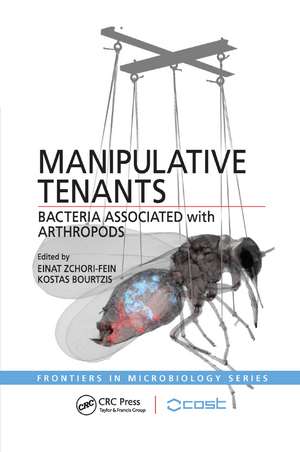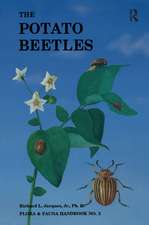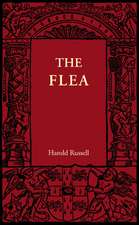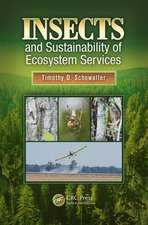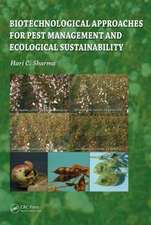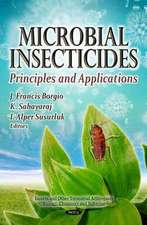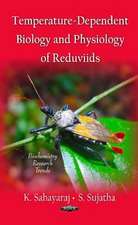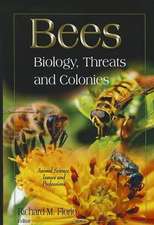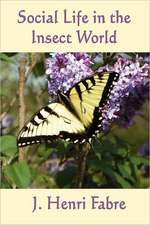Manipulative Tenants: Bacteria Associated with Arthropods: Frontiers in Microbiology
Editat de Einat Zchori-Fein, Kostas Bourtzisen Limba Engleză Paperback – 14 noi 2018
Manipulative Tenants: Bacteria Associated with Arthropods introduces the fascinating world of bacteria-arthropod associations with an emphasis on the bacterial partner. Written by an interdisciplinary team of international contributors, this book provides an overview of the diversity of bacterial symbionts identified to date as frequent partners of terrestrial arthropods. It discusses primary (obligatory) symbionts as well as the most abundant secondary (facultative) symbionts currently known.
Summarizing the most up-to-date information available on each symbiont, the book presents a synopsis of the field from the bacterial angle. Chapters examine Proteobacteria, including Sodalis and Wigglesworthia in tsetse flies and Stammerula and other symbiotic bacteria in fruit flies, as well as Bacteroidetes such as Blattabacterium and Cardinium. The book also identifies questions that emerge from the study of these systems. This comprehensive reference introduces the topic of bacteria-arthropod associations to researchers who are not familiar with it, enlarges the scope of knowledge of those who are, and provides a textbook for students in microbiology and other branches of biology.
Key selling features:
- Combines entomologists’ and microbiologists’ perspectives to create a full picture of complex systems
- Discusses dramatic differences in structure and behavior between some symbiotic bacteria and autonomous bacteria
- Examines the influence of symbiotic bacteria on the evolution of their hosts
- Includes diagrams, tables, graphs, pictures, and extensive references
- Emphasizes potential applications of symbiotic bacteria for solving agricultural and medical problems
| Toate formatele și edițiile | Preț | Express |
|---|---|---|
| Paperback (1) | 370.25 lei 6-8 săpt. | |
| CRC Press – 14 noi 2018 | 370.25 lei 6-8 săpt. | |
| Hardback (1) | 933.64 lei 6-8 săpt. | |
| CRC Press – 6 iul 2011 | 933.64 lei 6-8 săpt. |
Preț: 370.25 lei
Preț vechi: 477.20 lei
-22% Nou
Puncte Express: 555
Preț estimativ în valută:
70.86€ • 73.20$ • 58.97£
70.86€ • 73.20$ • 58.97£
Carte tipărită la comandă
Livrare economică 26 martie-09 aprilie
Preluare comenzi: 021 569.72.76
Specificații
ISBN-13: 9781138374331
ISBN-10: 1138374334
Pagini: 306
Ilustrații: 58
Dimensiuni: 156 x 234 mm
Greutate: 0.45 kg
Ediția:1
Editura: CRC Press
Colecția CRC Press
Seria Frontiers in Microbiology
ISBN-10: 1138374334
Pagini: 306
Ilustrații: 58
Dimensiuni: 156 x 234 mm
Greutate: 0.45 kg
Ediția:1
Editura: CRC Press
Colecția CRC Press
Seria Frontiers in Microbiology
Cuprins
Primary and Secondary Symbionts, So Similar, Yet So Different. Proteobacteria as Primary Endosymbionts of Arthropods. The Bacteroidetes Blattabacterium and Sulcia as Primary Endosymbionts of Arthropods. Secondary Symbionts of Insects: Acetic Acid Bacteria. Facultative Tenants from the Enterobacteriaceae within Phloem-Feeding Insects. Stammerula and Other Symbiotic Bacteria within the Fruit Flies Inhabiting Asteraceae Flowerheads. Candidatus Midichloria mitochondrii: Symbiont or Parasite of Tick Mitochondria? Rickettsiella, Intracellular Pathogens of Arthropods. Arthropods Shopping for Wolbachia. Host and Symbiont Adaptations Provide Tolerance to Beneficial Microbes: Sodalis and Wigglesworthia Symbioses in Tsetse Flies. Rickettsia Get Around. Cardinium: The Next Addition to the Family of Reproductive Parasites. The Genus Arsenophonus.
Notă biografică
Kostas Bourtzis, PhD, is a professor of molecular biology, genetics and biochemistry in the Department of Environmental and Natural Resources Management, University of Western Greece. His research is focused on the interactions between insect pests/disease vectors and symbiotic bacteria, with special emphasis on Wolbachia-mediated cytoplasmic incompatibility, genetic manipulation of Wolbachia, the molecular mechanism of cytoplasmic incompatibility, and Wolbachia genomics. His group has recently shown that Wolbachia-induced cytoplasmic incompatibility can be used as a means to suppress insect pest populations.
Einat Zchori-Fein, PhD, is a researcher in the Department of Entomology, Agricultural Research Organization, Israel. Her research is focused on the interactions between insect pests and symbiotic bacteria, with special emphasis on the diversity and phenotypes of secondary symbionts of the sweet potato whitefly Bemisia tabaci, horizontal transmission of secondary symbionts, and the multitrophic interactions among plants, plant pathogens, arthropod vectors, and natural enemies.
Per their research interests and personal beliefs, Prof. Bourtzis and Dr. Zchori-Fein are the chair and vice chair of the EU COST Action FA0701, Arthropod Symbioses: From Fundamental Studies to Pest and Disease Management, dedicated to promoting the use of endosymbiotic bacteria as a tool for the development of environmentally friendly approaches for the control of arthropods of medical and agricultural importance.
Einat Zchori-Fein, PhD, is a researcher in the Department of Entomology, Agricultural Research Organization, Israel. Her research is focused on the interactions between insect pests and symbiotic bacteria, with special emphasis on the diversity and phenotypes of secondary symbionts of the sweet potato whitefly Bemisia tabaci, horizontal transmission of secondary symbionts, and the multitrophic interactions among plants, plant pathogens, arthropod vectors, and natural enemies.
Per their research interests and personal beliefs, Prof. Bourtzis and Dr. Zchori-Fein are the chair and vice chair of the EU COST Action FA0701, Arthropod Symbioses: From Fundamental Studies to Pest and Disease Management, dedicated to promoting the use of endosymbiotic bacteria as a tool for the development of environmentally friendly approaches for the control of arthropods of medical and agricultural importance.
Descriere
Summarizing the most up-to-date information available on bacterial symbionts of arthropods, this text provides an overview of primary symbionts as well as the most abundant secondary symbionts known to date. To encourage the integration of theory and practice in efforts to find innovative routes to pest and disease management, the editors bring together entomologists and microbiologists to create a full picture of the complex systems. Including diagrams, tables, graphs, pictures, and chemical structures, the text offers comprehensive information and a unique perspective on a fast-growing field.
